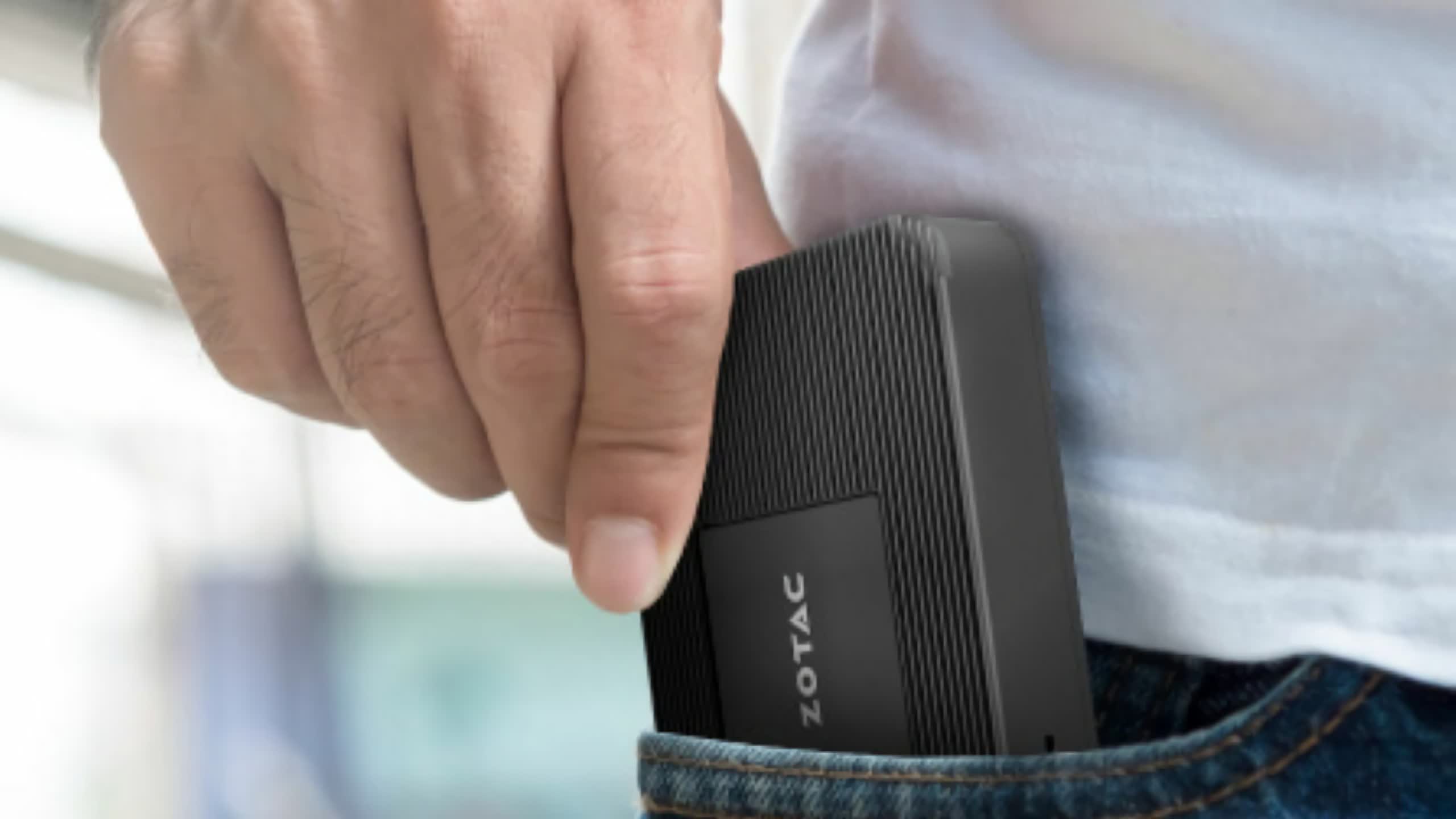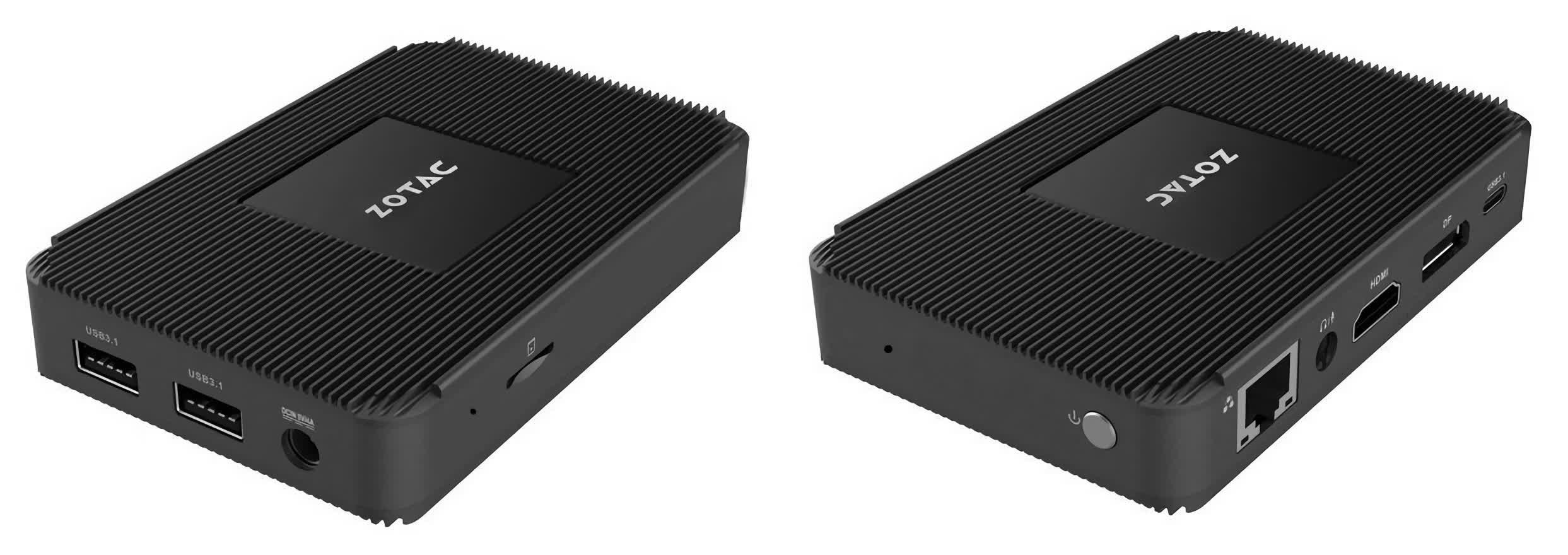In a nutshell: Small form factor computers are handy for those with a small amount of workspace, or who want something that is not so big and loud as a normal sized tower PC. Zotac has revealed its first SFF computer capable of running Windows 11.

This week, computer maker Zotac revealed a tiny Windows 11 PC at Computex 2022. The Zbox PI336 Pico is a small form factor (SFF) computer about the size of an external storage device (4.5in x 3in x 0.8in). This fully capable desktop can fit right in your pocket or be tucked away behind your monitor out of sight.
The Zbox PI336 Pico minuscule chassis packs a 1.2GHz (3.0GHz boosted) Intel Celeron N6211 dual-core with UHD graphics, 4GB of LPDDR4x RAM, and 128GB of onboard storage. Connectivity options include Wi-Fi 6E, Gigabit Ethernet, Bluetooth 5.2, two USB 3.1 Gen2 ports, one Type-C port, a headphone/microphone combo jack, and a Micro SDHC card reader. It also has HDMI 2.0 and DisplayPort 1.4 with up to 2160p resolution and supports dual-monitor setups.

The PI336 Pico comes pre-installed with Windows 11 Pro and a separate USB thumb drive for restoring the system to factory conditions or a previous state.
It's clearly not going to replace your HEDT rig or gaming PC but does make a nifty compact traveling computer. It also comes with a mounting bracket if you would rather hang it on the wall or situate it behind a monitor, making for a discrete desktop PC in the family room. The unit also doesn't need an AC brick. The slightly larger adapter just plugs straight into a wall socket.
Zotac hasn't revealed pricing yet. The previous SFF PC in the Pico line — the Zbox PI335, running Windows 10 — retailed for $230. The PI336 is an upgrade, and the chip shortage has inflated things, so this model might go for a bit higher. Zotac doesn't have a release date to reveal yet.
https://www.techspot.com/news/94705-zotac-minuscule-windows-11-pro-desktop-pc-only.html